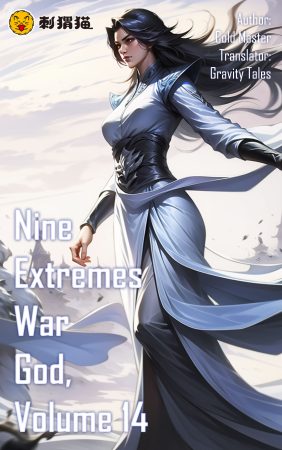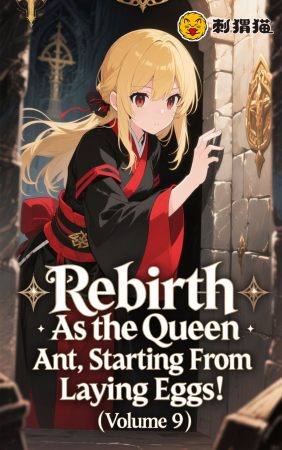Chapter 130
Our Discord Server: https://discord.gg/PazjBDkTmW
You can buy coins here to unlock advanced chapters: https://gravitytales.com/coins-purchase-page/
Chapter 130: Red Rain Day
People from all walks of life were preparing for the upcoming war, but that didn’t mean all entertainment activities were completely halted.
With the efforts of the Abyss Researcher and the connection between Tasha and Victor, the opening day of the Abyss Passage could now be predicted with relative certainty, with a maximum error of no more than two months. As there was still about half a year left until that date, the preparations that could be rushed had basically been completed. There was no time for any more major actions, and the remaining parts only needed to proceed in an orderly manner. In such a situation, the residents of Aryan were becoming restless, much like students nearing their exams and holidays.
A national celebration was held in Aryan at this time.
Twenty years ago, an upgraded version of the Bloodline Detector was completed in Tasmanian, a red cloud spread in the sky, and a "red rain" swept across the entire Aryan. Red light fell on almost everyone’s head, revealing long-erased non-human bloodlines above many people. Many who had always considered themselves ordinary Imperial citizens learned for the first time at such an age that they still had non-human bloodlines. It was a day that shook the entire Empire and all the intelligent beings still residing in the Primary Material Plane.
So the holiday with this theme included everyone.
The Day of Red Rain is now included in textbooks, and in the future history books and among casual conversations, it will surely have more complex opinions. But for the current inhabitants of Aryan, the most fitting part of The Day of Red Rain is its perfectly timed date. Looking forward gives time for anticipation and preparation, looking back is enough to get those who have celebrated back on track. The day The Day of Red Rain happens is just the right time for a great celebration.
The twentieth year after The Day of Red Rain, this day was officially designated as the "Red Rain Festival" each year.
To remind people how silly it is to hate others without reason, to commemorate the great unity, love and friendship among different races in the past, to celebrate when the once smoky Aryan marched towards peace… and so on, the reasons for setting up the festival are noble and very reasonable. And most importantly, who doesn’t like a celebration?
The inevitable tension and lethargy disappeared as the preparations began, like a breeze clearing the stagnant air. Whether from the Empire, Tasmarin, or Orc, they generously allocated a week-long holiday for people to have enough leisure time to join this first-ever celebration. Various official programs were organized, each day had highlights, and there was fun everywhere. Major media outlets occasionally revealed new preparations, with various promotions being enticing, like a guidebook tempting everyone to join this fresh celebration.
People did indeed join in.
In the days leading up to the first Red Rain Festival, the whole of Aryan was already immersed in the festive atmosphere, comparable in warmth to Western Christmas and Eastern New Year. The first two days of the festival were free time, as this unprecedented festival had not yet developed any traditional customs. The Red Rain itself symbolized diversity of races and civilizations, so the first Red Rain Festival turned into a magical mix, where all kinds of people brought the most joyful parts of their respective festivals and piled them up here.
The Amazonians carried bows and arrows on their backs, entered the forest in groups, and hunted deer herds. The traditional deer-hunting activity was held at the beginning of the new year. Amazonians considered finding a deer herd lucky and did not hunt extensively, as winter was tough for all creatures. But now it was early autumn, and the deer herds in the Angaso Forest were fat and healthy, in the hunting season – for ecological reasons and for the development of various natural attribute races and professions, several regions had separate hunting breaks and hunting seasons. During the hunting season, they brought back a group of fat prey, cooked and shared grilled meat, and even the most nature-loving Druids of the forest would not complain.
The Druids were really bothered by how to celebrate. They cherished every season of the year, whether it was the spring of all things coming to life or the silent winter. The beauty of nature existed at every moment, with no special holidays worth celebrating. The previous Great Druids were one with nature, perceiving the changes in seasons with body and soul, and even cared little about dates. It was quite challenging to leave behind any traditional holidays for them. Listing the important days of the Druids seemed to only revolve around the apprentices passing the test recognized by the Heart of Nature.
On the day of evaluation, the Druid apprentices listen to riddles from ravens or oak trees, complete various challenges, and seek recognition from the Heart of Nature. However, preparing for the ceremony on the festival day seemed too sad. After discussing for a month, the Druids finally decided to give out evaluation rewards first.
During the Red Rain Festival, Druid mentors distribute special seeds to apprentices. These seeds, catalyzed by advanced Arborists, are recognized by the Heart of Nature. By placing them under their tongues, the apprentices can understand the language of trees and birds. The apprentices are excited about this, just like a person with poor eyesight suddenly putting on glasses, seeing the world with great clarity. With this help, they can see the direction of the future. Even though these seeds will expire in less than a day, the apprentices treasure them.
Craftsman Dwarves do not have to worry about how to celebrate, as their festival always has certain essential and predictable elements. Before the festival arrives, craftsmen work hard to create gifts for themselves or loved ones. This must be done before the festival begins not because they need to take a break when the festival starts – carefree Craftsman Dwarves actually enjoy forging work and do not find it burdensome – but because the festival involves drinking, drinking until full, and then getting close to the furnace is quite dangerous. Even if they do not burn their arms or legs, losing their beard to the furnace is not a good idea.
Before the Red Rain Festival, the forging room and workshop are buzzing with activity, with dedicated craftsmen working tirelessly through the night; within the first hour of the arrival of the Red Rain Festival, these workplaces no longer see a single laborer. Even craftsmen from different tribes are pulled into their feasts by their Dwarf colleagues, watching them dance between various barrels of wine, regardless of age or gender. The drinking culture of the Craftsman Dwarves has a long history, offering both potent spirits and fruit wines that even children can enjoy a few sips of. Even those who cannot handle alcohol do not need to worry about being pressured. Interestingly, most Craftsman Dwarves are not great drinkers. Their feasts start energetically but soon wind down as the lively Dwarves quickly find themselves lying flat on tables or the floor.
While most festival participants enjoy exchanging gifts, the thieves’ guild members have a different way of expressing themselves. Many Vagabonds practice skills that are not often seen, and during the festivities, they do not gather closely to avoid any unfortunate accidents. For example, a group of assassins may meet and realize they have major conflicts in their work, or a group of thieves dining together might find a neighboring table occupied by Paladins, who are also on holiday.
The holiday activities organized by the thieves’ guild are quite unique, with valuable gifts placed in secure houses in various locations, filled with traps and well-prepared guards. Members interested in joining the festivities can try various methods – be it stealing, looting, disguising as guards to infiltrate, deceiving the guards, etc. – as long as they can safely enter and exit, they can take anything in the room.
In this festive activity, participants are not allowed to harm the guards, although it is much more challenging than obtaining gifts (or loot). The guards are also members of the thieves’ guild, and if a challenger messes up, they will be stripped of their loot as per the rules. Unexpectedly, the guards’ favorite loot is not money or weapons but the loser’s underpants. This behavior, similar to the traps in the secure houses, is filled with dark humor.
The guards will not harm the challengers, and the traps in the room will not either; they will only bring persistent odors, paints that cannot be washed off for a day or two, mysterious potions that can make someone’s life chaotic for some time (probably experimental failures or official products of witches), and other such gentle tricks.
The "Headless Spike" who facilitated the establishment of the thieves’ guild has retired. This former leader of Lame Leg Street never thought there would be a day for a safe retirement. Now known as "Missing Teeth Larry," with several gold teeth in place, their mind was never suited for manipulation, and over the years, they have retired peacefully without seeking promotion in the guild or authority in a security company, leading a content and peaceful life, almost developing a potbelly recently.
When people talk about Larry, they first think of his wife Michelle, the president of the Southeast Chamber of Commerce. Michelle’s subordinates all know that the president and her husband are famous for being very much in love, often holding weddings (and receiving dowries) and leaving their two children for honeymoon trips every year.
Although Michelle is vain, greedy, and has some quirks that leave people speechless, her abilities and professional qualities as the president of the chamber of commerce are impeccable. While people were looking forward to the Red Rain Festival holiday, she quickly seized the business opportunities in it. Apart from sponsoring festival activities and obtaining naming rights for advertising, the Southeast Chamber of Commerce itself created a new festival tradition.
The researchers sponsored by the chamber of commerce studied the past festival activities of dwarves. Most of the wealthy and financially savvy dwarf races believed in the God of Wealth, celebrating six to seven wealth-related festivals annually. Various reports were freshly released under the influence of payment, with titles like "How Dwarves Celebrate the Festival of Wealth", "Traditional Customs of AA/BB/CC Groups (Celebratory items from all over available at Southeast Market!)","Why not be a bit nicer to yourself and your family during the annual grand festival?". A series of reports were dazzling to read, but they all shared the same theme.
Buy, buy, buy!
From straightforward shopping promotions to gentle persuasion, from news-covered advertisements to seemingly serious but actually biased education ("Did you know, spending all your money and filling your pockets at the right time is an important step in wealth accumulation, the dwarves’ wealth is a perfect proof of this."). The Southeast Chamber of Commerce raised the banner of "reviving the lost dwarf Festival of Wealth to complement the central idea of the Red Rain Festival", began a large-scale promotion in a deceptive way, selling a large pile of accumulated goods in a short time. The successful customers who made purchases felt like they made a great deal. The merchants of the chamber of commerce were delighted with the soaring income, working overtime with joy.
The orcs living in the mountains were unable to participate in this shopping frenzy. They returned to their tribes and celebrated. Strictly speaking, Orcs were actually a collective term for many races. It is known that rabbit people and lion people would not live together. The railway was extending to more places, quickly bringing travelers back home. As a holiday benefit, the round-trip tickets this time were reimbursed by the military, and many orcs felt the convenience of the magic train for the first time. They pressed their faces against the windows, watching the scenery rush past.
"We’ll be home in just one or two days!" They marveled, "Faster than the leopard tribe, right?"
"If the railways could go a bit deeper into our territory, it would make trading much easier in the future." Another orc sighed, "Making a few trips a year, you can earn more than my salary!"
Some orcs muttered about the magic technology, expressing reservations and wariness about extending the railway into the mountains which could bring enemies to their doorstep. They reluctantly admitted that it was indeed very convenient.
The residents of the empire, who were busy with the Orc’s nagging, were too occupied to think about destruction. Humans (those who identify with human culture) are the largest group in Aryan, they love to join in and watch their neighbors’ unique festivals, like being at a big carnival. Also, the common customs of the ordinary Aryans are quite developed, and since Aryan is vast, residents in every direction have their own characteristics.
The southern residents have a tradition of drawing a smiling face on their children’s thumbs with a mixture of syrup and fruit juice, symbolizing a new year free from illness and full of laughter. The smiling face on the thumb can be eaten after New Year’s Eve, and in the past when resources were scarce, this was a rare treat for children. Nowadays, with better living conditions, sugar is not scarce anymore, and parents can generously cover their child’s whole hand with syrup for drawing.
Parents who do this will soon regret it, as restless children are everywhere, and the syrup smeared on walls and clothes is hard to wash off. Therefore, it’s easy to understand that after several years, the "sugar smiley faces" at the Red Rain Festival turned into "placing sugar cubes in the shape of a smiley face on the child’s bed", giving more sugar and reducing the need for cleaning, a win-win situation.
The residents near the capital choose to make their traditional food, a kind of pastry known as "Milk Hill," which is very popular in the northern region and essential during festivals. Sifted flour mixed with eggs, milk, and sugar is stirred until airy, then cooked in oil dripped from roasted beef. Under the high heat, the bubbles in the batter quickly expand, pushing up the still-fluid outer shell, creating a thin-skinned dough ball. The pastries are similar in size but varied in shape, with uneven heating resulting in a unique texture resembling soft rocks, like small hills.
It was said that in the past, housewives used the Milk Hill for fortune-telling, although the credibility of such methods is questionable, its disappearance is still somewhat regrettable.
For diners, eating Milk Hill does involve an element of luck, as each "hill" has a different filling. A hole is dug in the hollow Milk Hill, where creators can fill it with pudding, syrup, cream, or even sweet wine-soaked glutinous rice. The fragrant outer skin of the Milk Hill can cover the smell of the filling, leaving diners to discover the contents only after taking a bite. Some families would place a raisin inside a certain Milk Hill, and whoever eats that surprise is believed to have good luck that day.
The residents in the western mountains dress up goats, making them look majestic in elaborate costumes, lined up in two teams at the urging of a referee for a tug-of-war. People in the eastern region of Aryan like to select the roundest and largest turnips, hollowing them out and carving scary faces to create turnip lanterns, which they carry for nighttime walks. The custom of searching for "gold bells" in the forest on New Year’s Eve is widespread, but those fruits resembling golden bells only start growing in early winter, so they are not available at this time.
However, many continue the modified version of finding the gold bell. They hang real metal bells on trees the day before, and on the night of the Red Rain Festival, go searching in the dark. Finding the bell is a symbol of good luck.
"Using your own metal bell?!" a bystander couldn’t help but laugh, "That’s cheating, can that really bring you good luck?"
"Yes!" The old soldier who tied the bell to the tree climbed down with a nostalgic smile, nodding earnestly. "When we first saw this golden bell, we had the best of luck."
Several years before The Day of Red Rain, the dungeon forces were weakened and in hiding in one corner of Aryan. They were struggling and could only develop secretly. The brother of a governor isolated them to the southeast where they lacked food and clothing. Angaso Forest became barren under the rampage of magical weapons. That winter, it was hard to even find trees, let alone golden bell fruits. The Amazonian tied metal bells to newly planted trees to comfort the soldiers who couldn’t return home.
All the soldiers who served under Captain Halite had already retired with honor, but they still remembered the good times. To the surviving old soldiers, the golden bell clearly brought them real good luck.
Speaking of that difficult New Year that has become a beautiful memory, we have to mention Saroism now. Saroism, which used to have only the bare Saint Child, has grown rapidly over the years. There will no longer be the pitiful sight of Saint Child himself, dressed in a misbuttoned suit, going door to door to sell anymore. The once clueless Saint Child Samuel, who insisted on persuading everyone not to eat meat on New Year and was ridiculed and pelted with sugar papers, has now become the mature and reliable Pope Saro. The choices made by Saroism for the new festivals are quite realistic.
Saroism still observes fasting on certain special days, but not on New Year’s Day or during the Red Rain Festival. During the Red Rain Festival, the Pope of Saro holds a mass in the cathedral with standing room only, and the choir’s singing can be heard outside the church.
After the mass, the priest distributes a kind of holy bread. Although called holy bread, it looks more like jelly, the size of a baby’s fist, crystal clear and translucent, quite cute, shaking in a small dish. The holy bread melts in the mouth, with a delicious taste and ample calories, warming both the hearts and stomachs of people after several hours of mass. In reality, this is a kind of boiled meat jelly with many religious meanings, symbolizing a pure heart. However, even those who do not know the stories of Saroism may still feel spiritually touched when eating the holy bread on a chilly autumn night.
People of all kinds celebrate in their own ways, with boundaries between them not being significant. Race, religion, profession… There are many overlaps between these attributes, and conflicts are rare. An Orc could also be a Druid apprentice, while an ordinary person could finish Milk Hill and then eat the holy bread. The watchtowers of the dungeon blossomed all over Aryan, providing a broad view of the land. Tasha found it amusing, as if seeing compatriots from the past visiting various temples and monks seeking fortune tellers.
"Like a kaleidoscope," Victor said, "Different colors overlapping but not mixing into one, creating so many vibrant new colors. It’s really fascinating."
Finding it equally interesting, our minds come up with such different associations, Tasha chuckled, truly living up to the title of an artistic demon.
Victor looked at the present Aryan through Tasha’s eyes, his tone surprisingly lacking any sarcasm. He sat in a chair, chin resting on his hands, looking noticeably excited like a child collecting seashells on the beach.
This deep interest in the world and all living beings, for a demon born from the abyss, is probably no different from "loving this world."
The Red Rain Festival lasts for seven days, with the first three days as holidays for everyone to do as they please, and the last four days featuring organized activities. These activities are independent yet interconnected, with different themes in various locations and small exchange exhibitions.
The capital of the Aryan Empire hosted a magical technology exhibition, rare for showcasing a large number of magical technology products that can be used in everyday life. Visitors could not only observe but also interact, making it full of fun and leaving people hopeful for the future. Tasha considered hosting a magic technology exhibition herself, but since most wizards were too lazy to come out for the event, it was ultimately held at Ribe Lake as an art festival.












